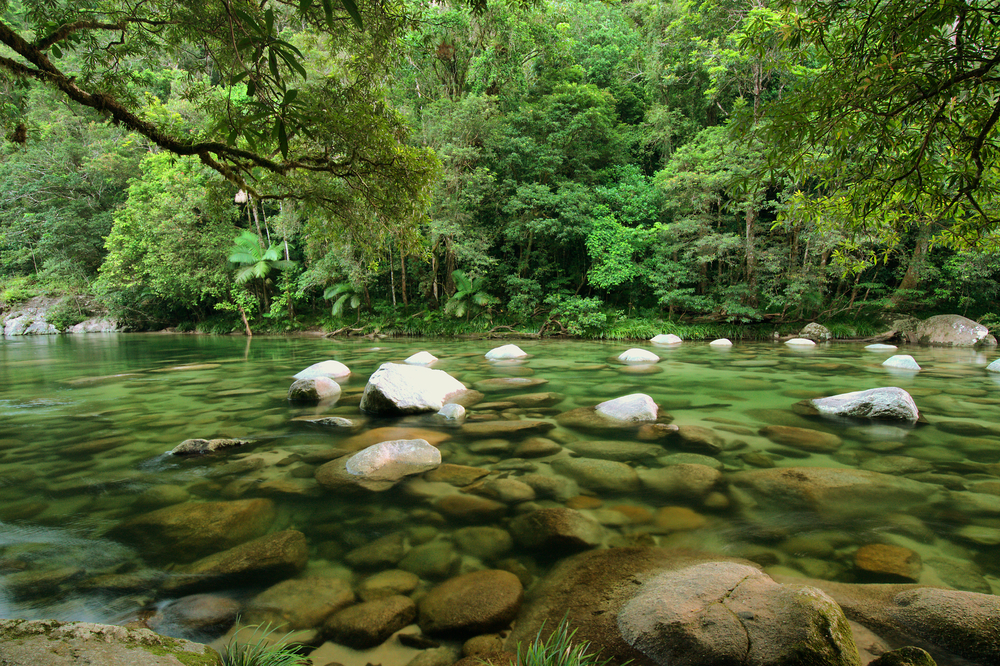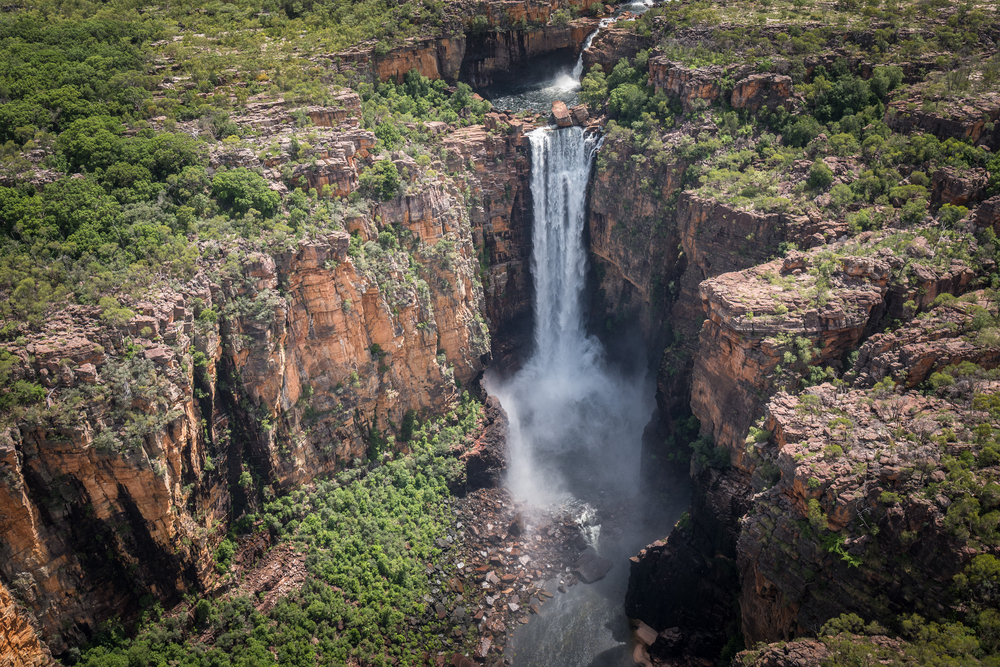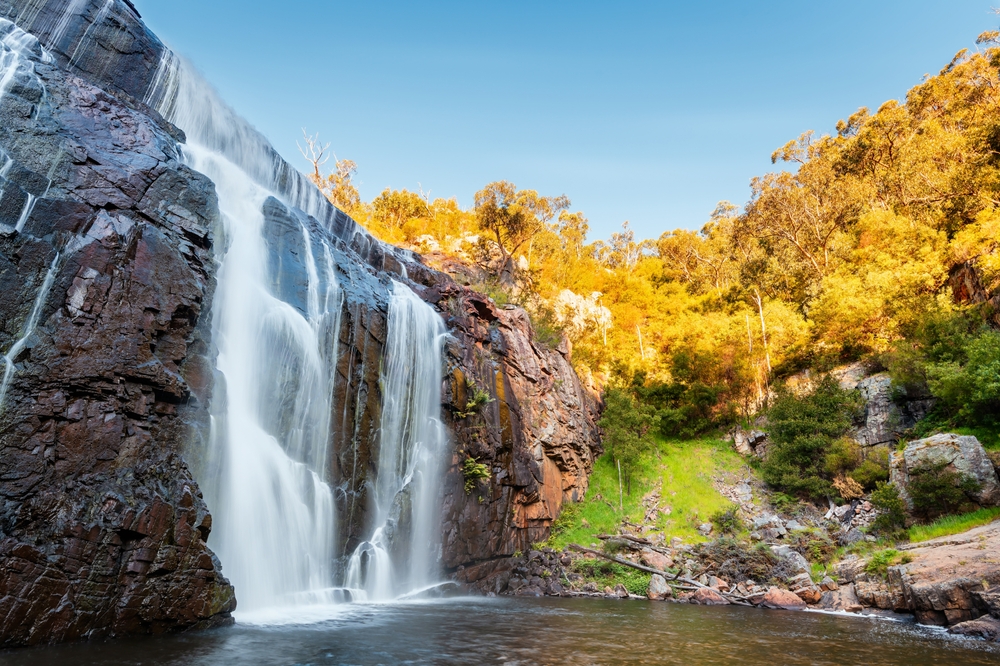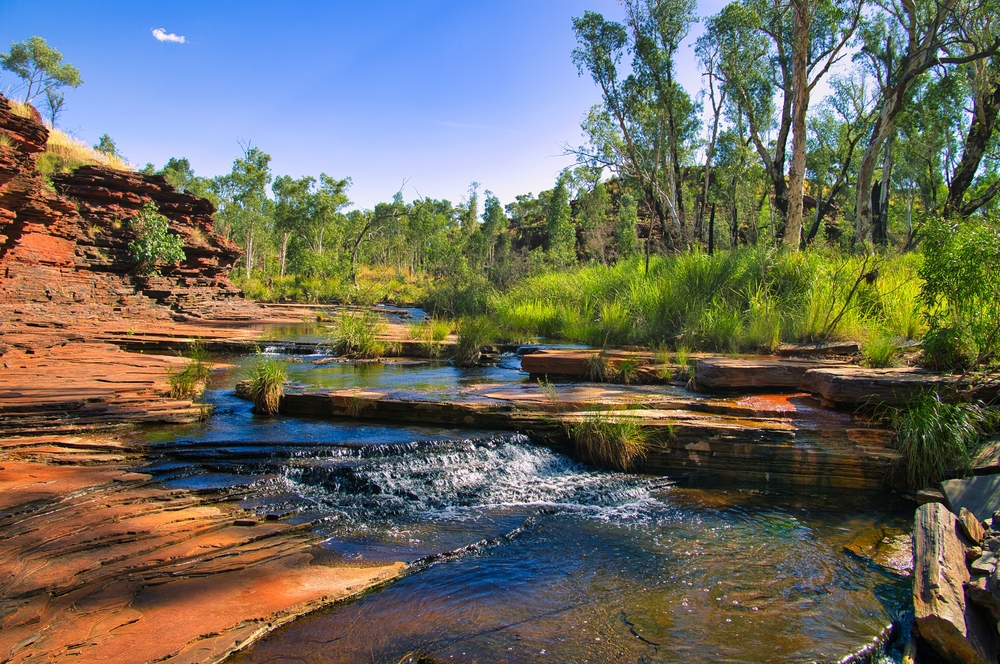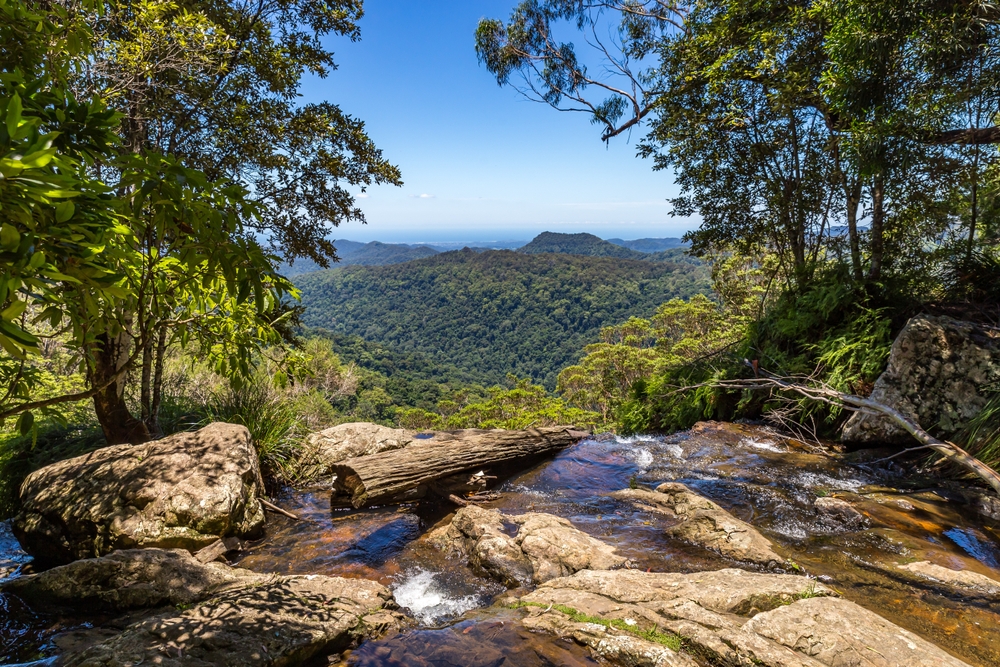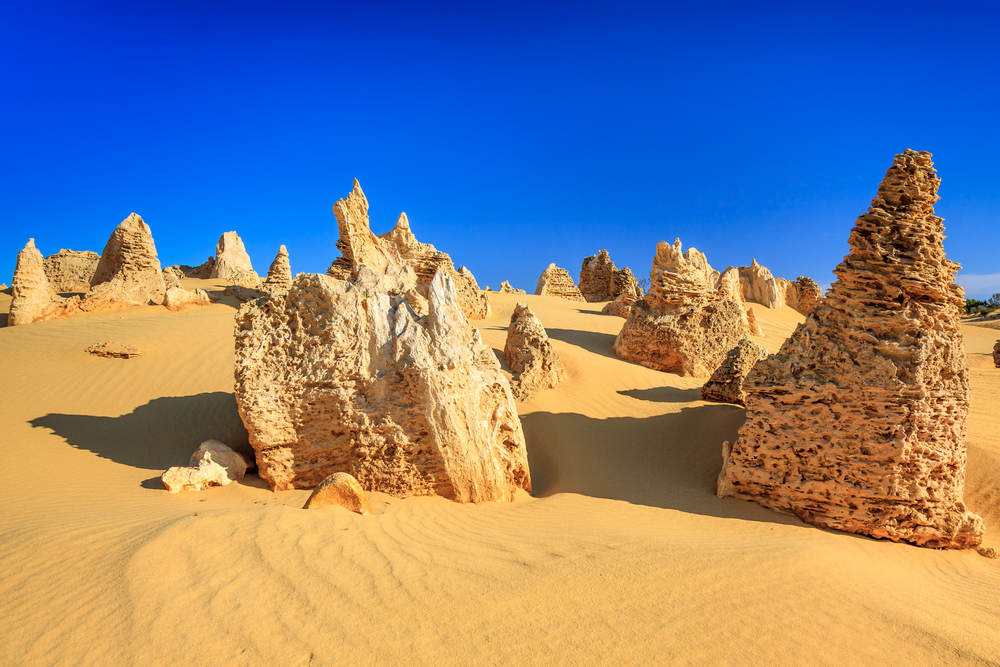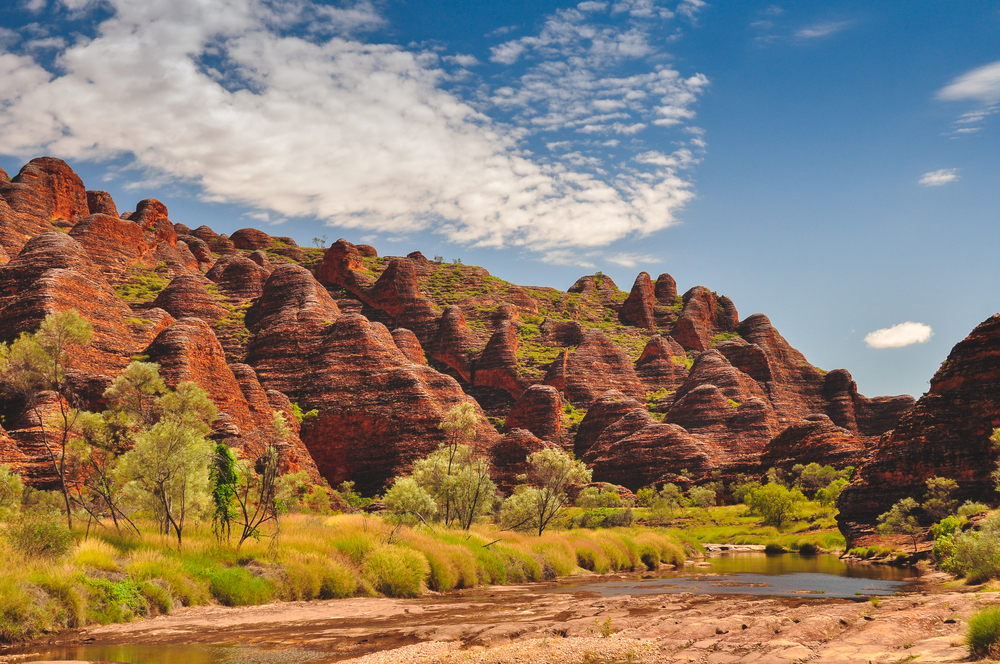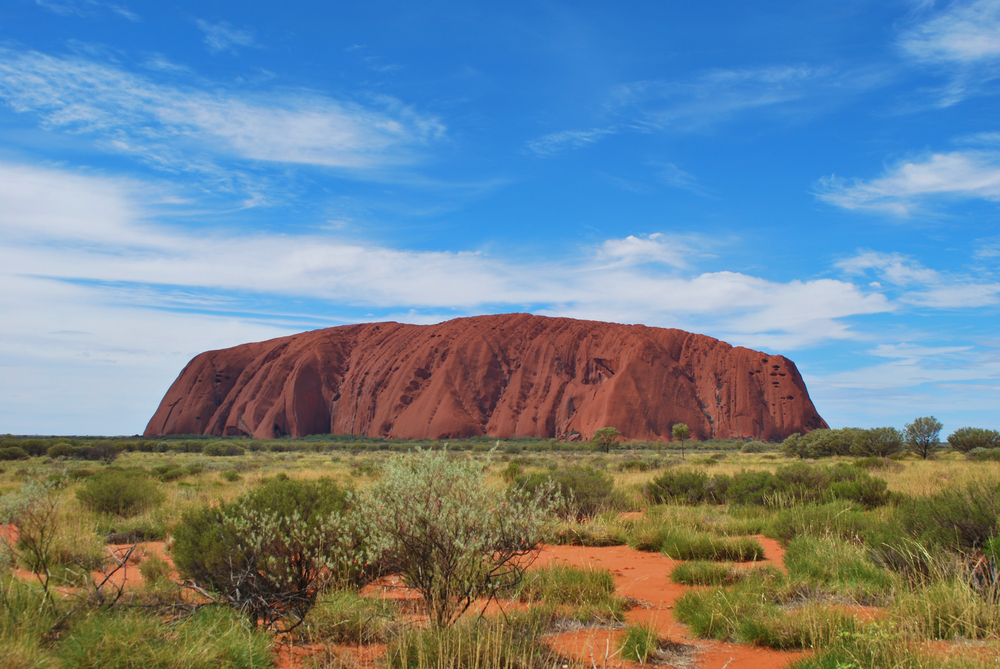Francois Peron Overview
Francois Peron National Park, known locally as Parc national François Péron, is a strikingly diverse and ecologically significant reserve located in Western Australia’s Shark Bay region.
Spanning approximately 1,063 square miles (2,750 square kilometers), the park is situated on the Peron Peninsula, where it meets the waters of the Indian Ocean. The park is a place of contrasts, where vivid red dunes, white sandy beaches, and turquoise waters create a stunning landscape. Towering cliffs along the coastline provide breathtaking views, while sheltered bays and seagrass meadows support a rich marine ecosystem.
The terrain is primarily composed of sandy plains, coastal dunes, and salt flats, with acacia shrubs, spinifex grasses, and salt-tolerant samphire vegetation dominating the park’s interior. This striking blend of colors and textures makes Francois Peron National Park one of the most visually stunning protected areas in Australia.
Wildlife thrives in the park’s varied habitats, making it a prime location for nature enthusiasts and wildlife watchers. It is home to several iconic Australian mammals, including the elusive bilby, the greater stick-nest rat, and the western barred bandicoot—species that have become rare or extinct in other parts of the country.
Reptiles such as sand goannas and thorny devils are often spotted, while a variety of birdlife, including emus, ospreys, and white-bellied sea eagles, can be seen soaring over the park’s rugged terrain. The surrounding marine environment is equally rich, with dugongs, dolphins, and sea turtles frequently observed in the clear waters of Shark Bay.
The park’s offshore waters also support vibrant coral reefs and an abundance of fish species, making it a prime location for snorkeling and marine exploration.
One of the most popular features of Francois Peron National Park is its breathtaking coastline, where red cliffs contrast sharply with the blue waters of the bay. Big Lagoon, a well-known destination within the park, is a favorite among kayakers and birdwatchers, offering a tranquil setting where shallow waters teem with marine life.
Cape Peron, located at the northern tip of the park, provides a stunning vantage point for observing dolphins and manta rays from the cliffs above. The Peron Heritage Precinct is another highlight, offering a glimpse into the region’s pastoral history with historic homestead buildings, an artesian hot tub, and interpretive displays detailing the area’s Aboriginal and European heritage.
Visitors to Francois Peron National Park can experience its beauty through a variety of activities, including four-wheel driving, bushwalking, fishing, and camping. The park’s sandy and often challenging tracks require a high-clearance 4WD vehicle, making off-road exploration a thrilling way to traverse the landscape. Walking trails lead to scenic lookouts and remote beaches, while kayaking and boating allow visitors to immerse themselves in the park’s pristine marine environment.
Wildlife encounters are common, whether along the shoreline, in the bushland, or beneath the water’s surface. Camping within the park offers an opportunity to experience the vast night skies of Western Australia, where the lack of light pollution creates ideal conditions for stargazing.
Conservation efforts within Francois Peron National Park have been significant, particularly in restoring native wildlife populations. The park is part of the Shark Bay World Heritage Area, recognized for its outstanding natural values, including its rich marine biodiversity and unique terrestrial ecosystems.
The Project Eden initiative has played a crucial role in reintroducing endangered species, such as bandicoots and bilbies, while also managing invasive predators like feral cats and foxes. Habitat restoration and ongoing scientific research continue to support the park’s ecological integrity. However, challenges remain, including the impact of climate change, human activity, and the need to balance conservation with visitor access.
Despite these challenges, Francois Peron National Park stands as a remarkable example of successful conservation in one of Australia’s most unique and fragile landscapes.












































































